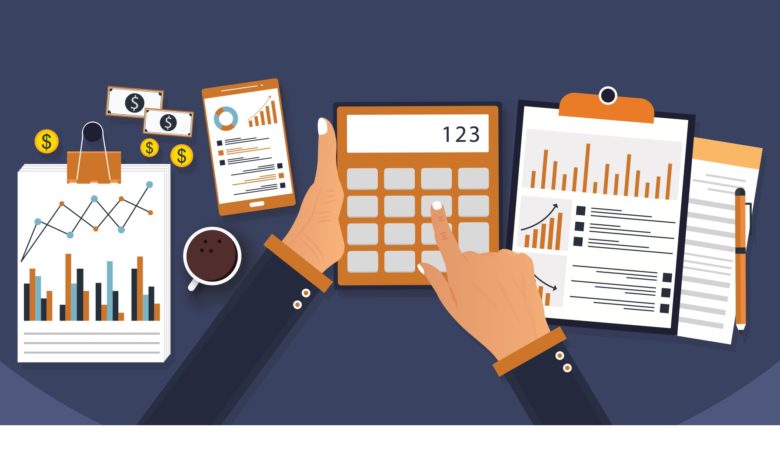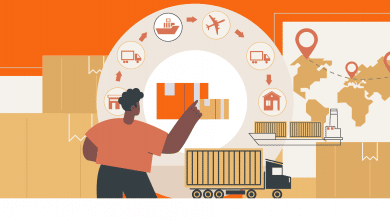Amazon Selling Fees and FBA Fees: Calculator for 2025

Updated June 1, 2021, for Amazon's 2021 Fee Increases.
How much are Amazon Selling Fees and FBA fees really?
We've compiled a comprehensive and transparent spreadsheet to calculate the true cost of selling on Amazon. There are a lot of variables that can affect your true cost of selling on Amazon. This calculator will give you a completely transparent breakdown of how these fees are calculated so you can plan appropriately and reduce your costs as much as possible.
Disclaimer: This worksheet contains hundreds of formulas that need to be updated on a yearly basis or more. Errors can occur. Confirm numbers with real Amazon shipment numbers and please let us know about any errors.
How to Use this Spreadsheet
This is an embedded Excel Spreadsheet. Fill in the Inputs columns in blue. The spreadsheet will automatically calculate important outputs in yellow. The spreadsheet has four categories of fees: Amazon FBA fees, Amazon Referral Fees, Amazon Storage Fees, and Costs of Goods.
You can download this spreadsheet by clicking the download button on the bottom of the worksheet. The password for editing purposes is ecomcrew.
How to Save on Amazon Selling Fees
There's some simple strategies you can take to reduce your Amazon selling fees as much as possible. Here are some practical advice for reducing Amazon FBA fees, Amazon referral fees, Amazon Storage Fees, and other inbound fees.
Amazon Referral Fees
Amazon referral fees are fairly straight forward. Most categories on Amazon charge a flat 15%. However, some categories are slightly higher and lower. For example, automotive has only a 12% referral fee while jewelry has a 20% referral fee. You can be creative and deliberately mis-categorize your items for lower referral fees. Be wary of this though as this can have negative effects on SEO as item category is a very significant ranking factor on Amazon.
Be aware that Amazon also has a minimum $1 referral fee for almost all categories. This, however, should not impact you unless you sell very low-value items.
Amazon FBA Fulfillment Fees
Amazon FBA fulfillment fees are where sellers can often underestimate costs. There are a few ways in which sellers underestimate costs:
- Mis-calculating the size tier of an item and/or Amazon mis-measuring an item
- Having dimensional weight applied to a bulky item (“dim-weighted”)
- Failure to take into account that Amazon adds a packing weight of 0.25-1 lbs depending on the size category
As many of us know, Amazon has several different size categories for items and shipping rates are calculated accordingly. Before you even begin to sell an item you must determine what size category it is in. Once you actually send items in to Amazon, confirm that the item dimensions that Amazon measures match up with what you measured. Amazon makes frequent mistakes. If there's any discrepancies, ask Amazon to re-measure your items.  You must also always be acutely aware of dimensional weight. Dimensional weight is calculated as Weight x Length x Height /139. Amazon will use whichever is greater between your actual weight and dimensional weight as your shipping weight (UPS, FedEx, and most major carriers use similar formulas). Being dim-weighted can increase your Amazon FBA shipping fees significantly.
You must also always be acutely aware of dimensional weight. Dimensional weight is calculated as Weight x Length x Height /139. Amazon will use whichever is greater between your actual weight and dimensional weight as your shipping weight (UPS, FedEx, and most major carriers use similar formulas). Being dim-weighted can increase your Amazon FBA shipping fees significantly.
Finally, many sellers do not realize that Amazon adds a packing weight to all items. Amazon adds 0.25 lbs for standard size items and 1 lbs for over-size items. Where this can really affect you is it can cause you to get pushed up to other size tiers. An item weighing 0.99 lbs will have 0.25 lbs added as packing weight and subsequently be pushed from the under 1 lbs standard size category up to the over 1 lbs category, nearly doubling the FBA fees on the item in the process.
Standard Size vs Oversize Items
Every experienced seller knows that there is a significant fee difference between oversize and standard size items. Amazon defines a standard size item as one that:
- Weighs 20 pounds or less
- The length (or longest side) is less than or equal to 18 inches
- The width (or median side) is less than or equal to 14 inches
- The height (or shortest side) is less than or equal to 8 inches
Amazon will cubiscan your items when they first arrive at fulfillment centers and periodically thereafter. Remember that the cubiscan will measure protrusions in the package (i.e. a bulging package) when considering the dimensions. The cubiscan dimensions will fairly regularly be slightly larger than your measurements because of this so add some padding into your dimensions if your close to reaching the maximum of one measurement for your standard size items.
Amazon Storage Fees
Amazon storage fees are dictated by the size category of the item and the season. Amazon charges approximately 300% more during peak, which falls from October to December. It also charges about 40% more for standard size items than oversize items. It's important to know that while Amazon storage fees may seem relatively cheap on a per-item basis, Amazon storage fees are typically anywhere from 100%-800% more expensive than a third-party logistics provider, especially during peak season (Amazon charges around $170/pallet during peak whereas most 3PLs charge around $20/pallet).
Storage fees are even more crippling when long-term storage fees are taken into account. Storing inventory at Amazon for longer than 6 months must be avoided – at that point the approximate cost per pallet of goods is a staggering $240+.

Inbound FBA Fees
There is a significant cost of landing your items at Amazon FBA warehouses. There are both inbound shipping costs and handling fees from third-party logistics providers (if you are using one). In general, you should try to ship to Amazon direct without using a 3PL as long as you can sell through your inventory in 6 months or under. We have an excellent article on shipping full containers and LCL freight directly into Amazon. Using a 3PL adds costs, transit times, and increases the likelihood of out-of-stockages.






Thanks for sharing this detailed breakdown of Amazon’s selling fees and FBA fees! As a seller on the platform, it’s great to have a clear understanding of the costs involved. I appreciate the calculator tool you’ve provided, it makes it so much easier to budget and plan for my sales. Keep up the good work!
Is there a 2023 version?
Hi,
I have a injection molded product that I have invented and will produce and I intend to use FBA. I think that people will buy a lot of them for around the $5 price range but I can’t seem to be able to turn a profit on Amazon. How do other items that sell in that price range make profit? Each item will measure about 4 x 4 x 1 in and weight about .03 lbs.
Too hard to judge without knowing the product. Chances are good they are making a profit but a very small one (<10%)
Hi, there is a problem on clothing fba cost.
Large standard-size 12-16oz (clothing)
Fixed it – thanks.
Great file, thanks! I just noticed, though, in the June edition if you have a “Large standard-size 6-12oz” item, the FBA cost sets itself to zero. Referral section looks ok. Thanks!
Should I9-I11 in the Formulas tab include the IF statements? I do not believe there is a minimum 2 inch rule for standard size.
Thank you – you’re right. Some of the formulas from oversize accidentally got copied into the standard size cells.
Should K11 in the Formulas tab be 0.30 instead of 0.38? I see the Large Standard Size calculation for 3+ pounds is $5.68 + $0.30/lb above first 3 lbs.
Correct – fixed.
hello,
“size_tier=”Large standard-size 12-16oz”;lg_std_size_under12to16_fbaCost”
in E21 should be corrected as
“size_tier=”Large standard-size 12-16oz”;lg_std_size_12to16_fbaCost”
and also amazon mentions:
“Important: * For standard-size products that weigh 0.75 lb or less, and for special oversize products, use the unit weight. For all other products, use the larger of either the single unit weight or the dimensional weight. See Dimensional weight for more details.”
I think the calculations don’t take this into account
Thanks – fixed.
I ran my first test on the new spreadsheet and already I found an issue.
The dimensions I put in or 18 x 14 x 8.1 (weight 3 lbs) “small oversized” which is a dimensional weight of 15 pounds.
So, with the new June fees it should be $8.66 + $0.38/lb above first lb (14 dim lbs * .38) = $13.98
Your calculator produces $13.60
The dim weight should be 14.68 lbs as far as I can tell. 18x14x8.1/139.
Hi, I’m confused on the point about packing weight. It’s brought up in the blog very prominently but it seems to me that Amazon has removed all packaging wait in June 2021. Who is correct on this point? Am I missing something?
They’ve gotten rid of it. Any mention of it is out-dated info. The spreadsheet shouldn’t calculate it at all.
On the spreadsheet, any time it says “yes” for “dimensional weight applicable?”, It doesn’t actually use the dimensional weight. So if it says “yes” in this field, it still uses the actual weight. I’m not sure how such a fundamental flaw could’ve been unnoticed so far. Am I missing something?
Dimensional weight is only used in some circumstances and Amazon takes the greater of dim weight and actual weight.As far as I can tell, it’s being calculated correctly.
I found a mistake on the spreadsheet: Formulas H9 should be a Yes because it’s a standard size over 1 lb — so therefore dimensional weight is calculated.
Thanks – updated
Thank you for your kind contribution to the seller community. Appreciate the wonderful excel calculator.
Thanks! Glad to hear the calculator is helpful
Hi Dave,
Great tool. I just wanted to let you know that Amazon has released new 2021 US FBA fulfilment fee changes. https://sellercentral.amazon.com/gp/help/GABBX6GZPA8MSZGW?language=en_US&ref=ag_GABBX6GZPA8MSZGW_cont_201411300
I’m so bad at spreadsheets (I’d do it myself if I knew how!, it would be amazing if you could add the following into your calculations:
return processing fees
removal order fees
refund admin fee
(I believe most people expect around 10% returns – please correct me if I’m wrong).
All the best and keep up the great work!
Unfortunately no plans for adding this.
Hey Dave,
Fantastic & very comprehensive spreadsheet!
I’ve manipulated the format of the spreadsheet to work horizontally, with the goal of bulk-inputting thousands of products at once. I’m running into errors with the formula’s referencing ‘sales_price’ and can’t easily swap to cell ‘c4’ etc.
Can I send you the updated sheet & pay you to fix the formulas so it will scale vertically?
Thanks!
Hehe nope – but feel free to use it however you want :)
Hello, thanks very much for this helpful spreadsheet. Any chance you could share the history of this spreadsheet (to see how fees have been changing)?
Unfortunately it’s not something we have readily available.
Home & Garden shows zero fba fee. fyi
Thanks!
Dave! This was exactly what I was looking for! Thank you for making this.
Will you be updating it yearly with the changes of fees?
Also here’s an idea. If you don’t want to manually update the fees yearly, you might be able to input the data with the formula =importhtml or =importxml
I’m fairly new with these two functions. But I would be honored to utilize your sheet beyond 2020 if it’s updated one way or another.
Hi Dave – thanks for the great spreadsheet.
When I started using it I noticed when I choose Home and Garden it is not calculating any referral fee’s at all. I could send you a screenshot if that helps? On your formulas sheet it has zero in cell C34 shouldn’t this say .15?
Hi Patty,
I’ll take a look during the next fee update (should be any week now). Until then you can also download the spreadsheet and edit yourself (pw is ecomcrew)
when entering the data for a bottle that is 2inch round and 9.5 inch high and weigh 1.25 lb . Amazon fees are over $11 . the cost of my product delivered is $4.75. This fees will price me out of the market.
any way that i miss calculate the fees?
$4.75 would sound roughly correct.
Hello Dave,
Very informative article, thanks for it.
Do you have same calculation for global selling I mean for Australia, Singapore and Japan,
Please share if possible.
Thanks in advance.
Not yet!
Great job and thank you Dave.
I wana know does it not include Returns/Refunds processing fee or PPC fee?
No it doesnt.
Hi Thank you for this information. However we can see the download button for the Excel file. Please can you forward onto me.
Thank you
Hey Dave,
Thanks for this great sheet, I’ve been using it for the past few months. I did however have to make some modifications to the formulas as some of it is not accurate, but there are parts I’m not savvy enough to fix. For example, a standard size product that weighs more than 1lb, Amazon determines the shipping weight by using the higher of either the dimensional weight or item weight. Your calculator only looks at the item weight for certain sizes. So if a product weighs 1.5lbs with a dimensional weight of 3.5lbs, Amazon will round it up to 4 lbs, which is $5.42 + 0.38 = $5.80. Your calculator sees it as a 1.5 lb product, rounds it up to 2 lbs and therefore the fee would be $4.90.
I’d be happy to show you my changes and discuss some of the errors I found.
hello, first thank you very much for sharing
second, where can I find this kind of excel with CM and KG?
As I am working in amazon.DE Europe
You’d have to download and modify yourself.
Dave – Can we get the password to unprotect the sheet please?
The password is ecomcrew
Hello Sir,
I’m looking for the download button but I can’t see it. Can you please send me the excel sheet at shivshankar8373@gmail.com, please
Thanks
Should be able to download it here.
I am selling a product on Amazon currently with the following data (from sellercentral):
Unit Volume: 0.02 cubic feet
Package Dimensions: 8.5 x 5.1 x 0.6 inches
Unit Weight: 13.6 ounces
When I input the data in your spreadsheet is shows a fulfilment cost of $2,63, but actually Amazon charging me a different amount for fulfilment cost ($4.90).
Do you know why?
Sounds like youre being put in the Large Standard Size 1-2 lbs category. I would inquire with Amazon why you’re in that category.
Hi Dave,
I found this error as well.
The threshold for weight in Large Standard (3-21 lbs) is 3 lbs. You currently have set as 2 in the formula, which causes a small overcharge.
Other than that, great little tool!
Thanks
Thanks! Fixed.
Very good article and tools. However the 2020 additional fee calculation is over 3lbs not 2lbs. Can you change it?
Can you clarify what you’re referring to?
Hi Dave,
First, I wanted to say thank you so much for providing all of the amazing content here on the blog. I’ve always been a huge fan of the podcast, but I didn’t realize that there was so much important content here on the blog.
Second, I had some questions about the excel formula sheet. I’m trying to figure out if it is a possibility there is are a few errors in the calculations.
For example, in the excel sheet and on the chart above, it shows the fulfillment fee is $4.71 for “Large standard-size one lb to two lb” but I think the price should be $4.76.
Another example, if I entered in a product that was 13.5 X 6.75 X 1.5 (L X W X H) and weighs 2 lbs, it’s showing the FBA cost would be $4.76. Wouldn’t the cost be $5.26?
Thanks again for everything Dave. ( I enjoyed hearing about your 2 year updated on Monday’s podcast.)
Best Regards,
Michael B
Hi Michael, I’ll review this in the coming weeks (especially when Amazon rolls out the new fee structure). Could be that Amazon is adding a packing weight or something else. Will work to confirm soon.
Thanks Dave!
Another great article from the ecomcrew!
I’m relatively new seller and find your site VERY helpful.
Regarding mis-measurement by Amazon, how can I see what they came up with? When I navigate through the inventory screen to “edit”, then more to the “more details” tab I only see the measurements I entered when creating the listing.
On the Seller Central FBA calculator I see the item dimensions and weight (matches item’s “more details” settings), but not the shipping measurements.
Where can I find Amazon’s measurements? Thanks!
Easiest way is to type in your ASIN here: https://sellercentral.amazon.com/hz/fba/profitabilitycalculator/index?lang=en_US
Having successfully opened the first video and watched it “Titles” how do I open the second video describing photography? Do we have to pay for videos 2 to 5?
Geoff
It gets dripped one video per day.
Dave,
There are some errors in the spreadsheet. For example, if Health & Personal Care is selected and Sale Price set to $20, the Referral Fee in cell C24 should be 15%. Same error appears with all other categories where the fee varies with Sale Price.
Also, the Amazon Seller Fee calculation in cell E26 is likewise incorrect for categories in which the Referral Fee varies with Sale Price. In my example, using a Sale Price of $20, the Referral Fee should be $3.50 ($20 x 15%), yet it calculates as $2.30 in the spreadsheet because the formula in the Formulas spreadsheet is correct.
Thanks – it was actually calculating correctly; it was just displaying incorrectly. Fixed now :)
Hi Dave,
Thanks for putting together this excellent worksheet. It seems like the spreadsheet isn’t compatible with calculating products that weight close to or over a 1lb. Everytime I try instead of the fee being calculated the size tier is.
Thanks!
Hi Anthony – can you clarify? Seems to be working for me.
Hi Dave, I have just started using your Fee Calculator which is fantastic thanks! I’ve been recommending it to my Facebook group as well. Unfortunately though I can’t seem to get it to work properly this morning, despite clearing my cache and trying on Chrome and Firefox. As soon as the Size Tier changes to Large it won’t update the Fees. Is there a problem with it or is it just my problem? :-) Have a great day, Thanks again, Su
Hi Su – the excel plugin can sometimes be buggy. Just download the excel document (pw: ecomcrew) and it should solve any issues.
Just wanted to say thanks and have a beaut day! :-)
Very useful tool. There is a bug though. The Large Standard Size 10-16oz is not displaying a price under “FBA Cost” (Row: 21).
Thanks – fixed now!
Hi Dave, thank you for sharing this valuable excel. I want to contribute with a correction. Size tier should be updated on formulas sheet according to 2019 fees (https://i.imgur.com/mdnfjy4.png). for example, there is no different bt “large standard 10 oz or less” and “large standard 10+oz 16”. Thank you again.
Thanks – fixed now!
hi Dave, would love to have a copy of your excel sheet. can’t find the download button here
Hi – I don’t have it immediately available but give the download button a retry later – it should work.
Thanks for summing up!
You’re welcome :)
Hello,
Thanks for the spreadsheet. Although it looks like there are errors in it. It says dimensional weight applies ”YES” (large standard size, between 1-2 Lbs), but then does not actually apply the dimensional shipping weight of 4 Lbs. It stays stuck at 4.71$ FBA fee.
For another product it says dimensional weight applies ”YES”, but it is actually a large standard size less than 1 Lbs for which dimensional weight does not apply. In this case the FBA shows correct though.
I shared this file with a lot of other friends that sell on Amazon, but now I am afraid it will make them make poor decisions.
It would be awesome if we could have that corrected if possible, because I think this is one of the most accurate tool I have found otherwise!
Thanks!
Hi Marc,
Thanks for your feedback. For part 1 – Amazon has conflicting statements. It appears though that dimensional weight is no longer applied to items UNDER 3 lbs since the 2019 fees update (https://i.imgur.com/mdnfjy4.png). The fees are correct but it should not say that Dim weight is applicable and I’ve updated this. The same for #2. Long story short, the fees should have been correct but it incorrectly said dimensional weight was applicable or not applicable.
I love spreadsheets so much that I made my own Google Sheets add-on for Amazon sellers (FBA). This should be up your alley if you’re a spreadsheet power user like me. Here it is – gorillaroi.com
Looks good – will have to check it out some time.
Hi Dave,
I am a fan of your podcasts and listening to all episodes.
any chance we could get the podcast on Spotify as they recently launched their podcasts section?
Thanks Ray for the headsup. I’ve asked Abby who’s in charge of our podcast editing to look into it.
Great spreadsheet. What other costs would you normally attribute to your total margin? I created a space for PPC for starters. Could you include a line item for expected return percentage and the fees associated with that?
Hey Cory-good to hear from you again after Hong Kong! My internal spreadsheet includes in addition to this international shipping costs, estimated inbound freight to Amazon, estimated PPC and estimated shrinkage.
Very useful worksheet, thanks for sharing!
Thank you!
Very informative article. Thanks for sharing Dave
Thank you!